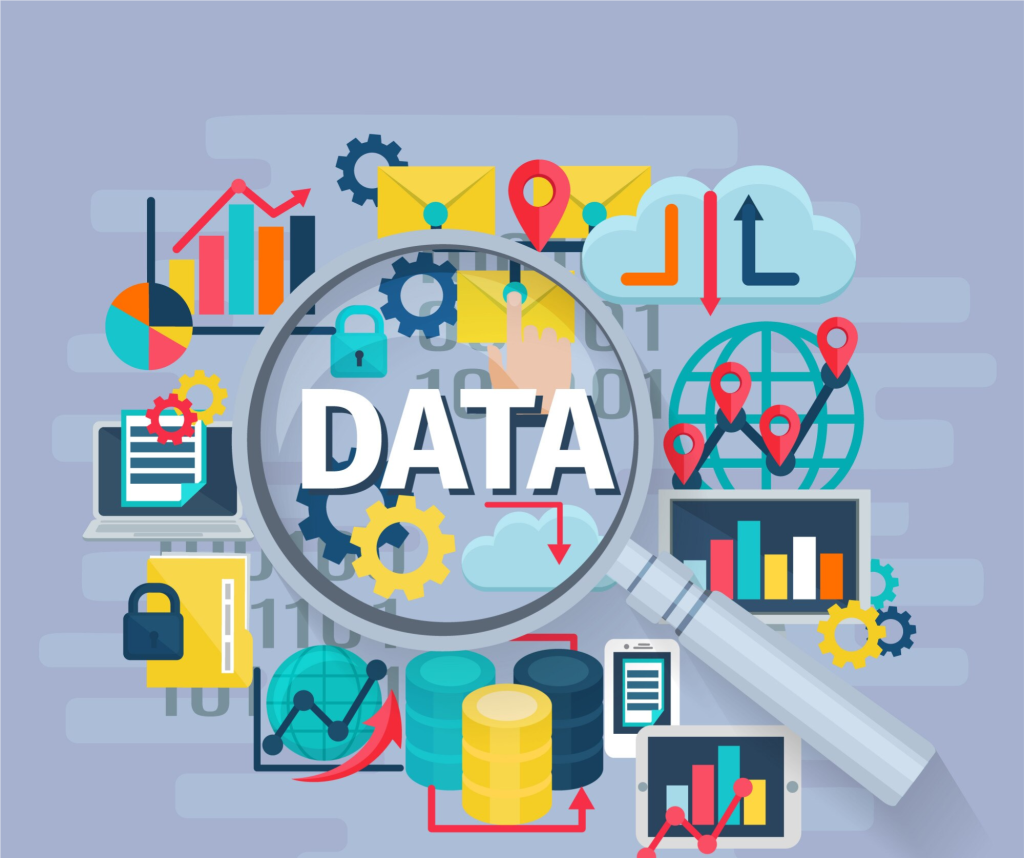
In the constantly evolving digital marketing space, data forms the foundation of any good marketing strategy. It gives a business a sense of their audience, how to reach them, and even how to construct campaigns for those audiences. From customer behavior to using analytics to decide on the next steps, data is king. In the future, marketers who move into the data-driven approach will realize better ROI, higher customer satisfaction, and more viable growth. In this blog, we’ll explore how data shapes digital marketing success, discuss its applications, and address its challenges with real-world examples.
The Importance of Data in Digital Marketing
Data is not just about numbers; it tells a story about consumer behavior, preferences, and expectations. By leveraging this information, businesses can fine-tune their marketing strategies to achieve better results. For instance, consider an e-commerce company that tracks visitor behavior on its website. By analyzing data, the company discovers that a significant number of users abandon their carts during the checkout process. Further investigation reveals that customers find the payment options limited. Armed with this insight, the company introduces multiple payment gateways, leading to a 20% increase in completed transactions.
Similarly, a food delivery app analyzing customer reviews may discover that users frequently mention delayed deliveries during peak hours. Using this data, the app optimizes its delivery algorithms and staff allocation, improving both service quality and customer satisfaction. These examples underscore how data-driven decision-making can address pain points, boost operational efficiency, and enhance customer experience.
Personalization and Customer Segmentation
The modern consumer demands personalized experiences, and data is the key to delivering them. Personalization involves crafting marketing messages, product recommendations, and services that align with individual customer preferences. For example, Netflix utilizes viewing history and user ratings to suggest movies and TV shows that match a viewer’s tastes. This level of personalization keeps users engaged and increases retention rates.
 Customer segmentation takes personalization a step further by grouping audiences based on shared characteristics. For instance, an online fashion retailer may segment its customers into groups such as “frequent buyers,” “seasonal shoppers,” and “first-time visitors.” Using this segmentation, the retailer can send targeted email campaigns—for instance, exclusive discount codes for frequent buyers or welcome offers for new users. This approach ensures that the messaging is relevant, increasing the likelihood of engagement and conversion.
Customer segmentation takes personalization a step further by grouping audiences based on shared characteristics. For instance, an online fashion retailer may segment its customers into groups such as “frequent buyers,” “seasonal shoppers,” and “first-time visitors.” Using this segmentation, the retailer can send targeted email campaigns—for instance, exclusive discount codes for frequent buyers or welcome offers for new users. This approach ensures that the messaging is relevant, increasing the likelihood of engagement and conversion.
Real-Time Analytics for Agile Marketing
Real-time analytics allows marketers to change course midflight, creating much nimbler and responsive campaigns. For example, a retail brand runs a social media ad campaign on Black Friday. The brand tracks its performance on an hourly basis. Based on click-through rate and conversion analysis, the brand recognizes that ads featuring video content are outperforming static image ads by 35%. Based on this insight, the brand shifts its budget to video ads, ensuring maximum engagement and revenue in the crucial sales period.
Likewise, a software company that is hosting a webinar for the launch of a product will be able to monitor sign-ups and attendance in real time. If the number of sign-ups is not as high as expected, they can change gears by sending reminder emails or aggressively advertising the webinar on social media. These examples show how real-time data enables businesses to make informed decisions that amplify the impact of their marketing efforts.
Predictive Analytics and Future Trends
 Predictive analytics allows businesses to anticipate customer behavior and market trends by analyzing historical data. This capability helps organizations proactively plan their strategies and allocate resources efficiently. For example, a travel booking platform uses predictive analytics to identify seasonal trends in bookings. By analyzing past data, the platform predicts a surge in holiday travel demand and launches early-bird promotions, securing a competitive edge in the market.
Predictive analytics allows businesses to anticipate customer behavior and market trends by analyzing historical data. This capability helps organizations proactively plan their strategies and allocate resources efficiently. For example, a travel booking platform uses predictive analytics to identify seasonal trends in bookings. By analyzing past data, the platform predicts a surge in holiday travel demand and launches early-bird promotions, securing a competitive edge in the market.
In another scenario, a grocery delivery service leverages predictive analytics to forecast increased demand for fresh produce during a local food festival. The service prepares by increasing stock levels and running targeted ads highlighting their fresh offerings, ensuring they meet customer needs without running out of inventory. These examples illustrate how predictive analytics can turn data into actionable insights, driving smarter marketing decisions.
Challenges in Data-Driven Marketing
 While data holds immense promise, it also creates challenges that companies must tackle in their journey to harness its complete worth. Data accuracy is a common problem. Consider an example of a fitness app that pulls data from various wearable devices of users. That may be inconsistent due to faulty syncing or malfunctioning hardware. Inaccuracies can result in misleading insights, a reason why businesses need to verify and clean their data from time to time.
While data holds immense promise, it also creates challenges that companies must tackle in their journey to harness its complete worth. Data accuracy is a common problem. Consider an example of a fitness app that pulls data from various wearable devices of users. That may be inconsistent due to faulty syncing or malfunctioning hardware. Inaccuracies can result in misleading insights, a reason why businesses need to verify and clean their data from time to time.
The second major challenge deals with data privacy. Given strict regulations like the GDPR and CCPA, there is a strong onus on companies to practice responsible treatment of customer data. An online retailer collecting email addresses of customers for follow-up marketing purposes must be very clear about their opt-out procedure and user data protection. Overcoming such challenges will be hard without proper data governance policies and substantial investments in security technologies.
Data-Driven Tools and Technologies
Harnessing the power of data in digital marketing requires the right tools and technologies. Platforms like Google Analytics enable businesses to track website traffic, identify user behavior patterns, and measure campaign performance. For example, an online learning platform might use Google Analytics to determine which courses attract the most views and optimize its homepage to promote those offerings.
Additionally, Customer Relationship Management (CRM) tools like Salesforce help consolidate customer data, providing a 360-degree view of interactions. For instance, a cosmetics brand can use CRM data to send personalized product recommendations based on a customer’s previous purchases. These tools not only simplify data management but also enhance marketing effectiveness by delivering actionable insights.
Conclusion
Data is no longer an optional component of digital marketing—it is a necessity. It enables businesses to understand their audience, craft personalized campaigns, and adapt to changing market dynamics. The examples in this blog demonstrate how data-driven strategies can solve real-world challenges, enhance customer experiences, and drive business growth. However, to truly harness the power of data, businesses must prioritize data accuracy, invest in advanced analytics tools, and uphold ethical data practices. By embracing a data-driven mindset, marketers can not only achieve greater ROI but also build lasting relationships with their customers, ensuring long-term success in the digital age.
